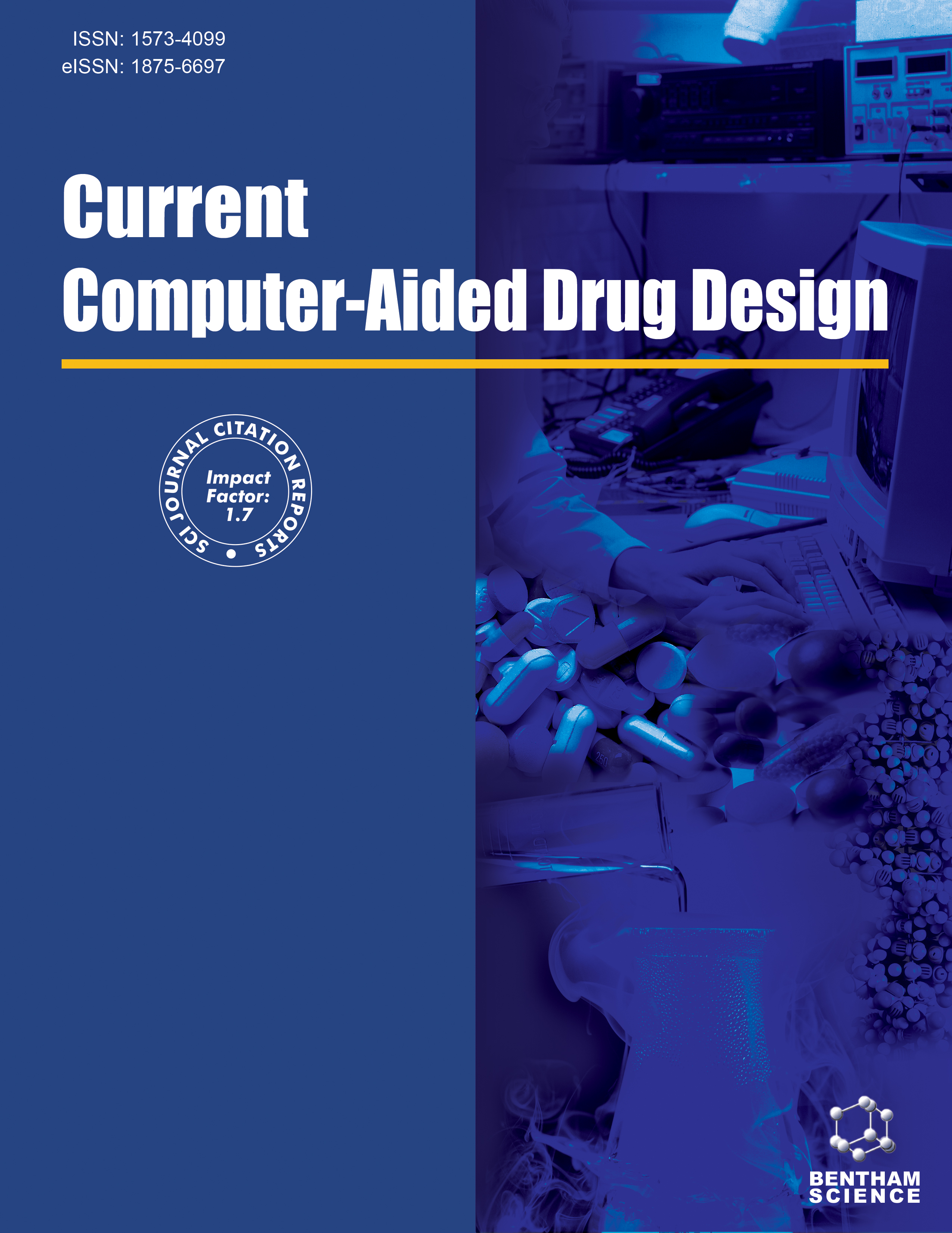-
oa Editorial
- Source: Current Computer - Aided Drug Design, Volume 8, Issue 1, Mar 2012, p. 1 - 2
-
- 01 Mar 2012
- Previous Article
- Table of Contents
- Next Article
Abstract
Chemobioinformatics: The Advancing Frontier of Computer-Aided Drug Design in the Post-Genomic Era Modern drug discovery is a highly expensive process, the cost of discovering one new drug ranging from $400 million to $2 billion. Drug design usually starts with the isolation of “lead” compounds, found by different approaches which include ethnopharmacology, natural product chemistry, screening of chemical libraries, and serendipity, to name just a few. A small fraction of such leads ends up in the pharmacist's desk. Between the chemist's laboratory and the bedside of the patient drug candidates undergo a complex series of chemical/biological/toxicological/clinical evaluations which is responsible for the staggering cost of drug discovery. The availability of high quality leads is critical in the early stages of pharmaceutical drug design. One of the crucial factors contributing to the escalating cost is that the drug developer has to produce and test a large number of derivatives of the lead structures for their beneficial and toxic effects before one useful drug candidate is identified. Computational evaluation of chemicals plays an indispensable role in modern drug design because they are cheaper and rapid alternatives to the medium throughput in vitro and low throughput in vivo bioassays which are generally reserved for later stages of discovery. The basic assumption of many computer aided drug design techniques is that beneficial or toxic effects of molecules, the result of ligand-biotarget interactions, can be expressed by the following relationship: BR = f (S, B) Eq (1) In Eq (1), BR represents the magnitude of pharmacological/toxicological effects produced by the chemical in the organism, and B represents the relevant biological target that is perturbed by the ligand resulting in the measurable response. It is believed that a major determinant of BR is the structure (S) of the ligand. The structure becomes the sole determinant of the variation of BR from molecule to molecule when the biological target, B, remains practically the same and there is alternation only in the structure of the ligand. Under such circumstances Eq 1 approximates to: BR = f (S) Eq. (2) In 1868, Crum-Brown and Fraser first stated that the constitution of permanently charged quaternary compounds determined their “physiological activity”. About two decades later, Richet (1893) observed that the toxicity of ethers, aldehydes, alcohols, ketones, and other organic compounds was inversely related to their aqueous solubility. Hammet's (1940) electronic descriptor sigma (σ) and Taft's (1952) steric parameter were important contributions in this line of research. The multiparamater linear free energy related (LFER) approach formulated by Hansch and Fujita (1964) was an outgrowth of this notion where combinations of different physicochemical properties or substituent constants were applied in models for the prediction of bioactivity of chemicals, particularly those belonging to congeneric classes. Models developed for congeneric sets of chemicals served us reasonably well initially. In practical drug design, however, one has to deal with large and structurally diverse (noncongeneric) collections of molecules for which not many experimental properties are available. The property-property relationship (PPR) approaches, exemplified by the LFER methodology, have limited applicability in such situations. A viable alternative is the use of calculated properties which can be computed directly from molecular structure without the input of any other experimental data. Topological, geometrical (3-D), and quantum chemical molecular descriptors belong to this group. For large sets of molecules, calculation of high level quantum chemical descriptors could be prohibitively costly in terms of computer resources. On the other hand, chemodescriptors derived from graph theoretic models of molecules have found applications in wide ranging computational models for new drug design. Long term administration of drugs in the management of diseases like malaria results in the development of resistance in the bugs leading to the diminished effectiveness of life saving drugs. Computed structural descriptors have been used to develop differential quantitative structure-activity relationship (DiQSAR) models to characterize the evolving differential chemical sensitivities of wild versus mutant varieties of drug targets. In the post-genomic era, the omics (genomics, proteomics, and metabolomics) technologies have generated a tremendous amount of data and brought fresh perspectives in our understanding chemical-biological interactions. New approaches have been used to formulate novel mathematical biodescriptors which have been applied to characterize complex proteomics patterns and nucleic acid sequences in an effort to understand pharmacological and toxicological effects of chemical substances as well as pathogenicity of organisms like pandemic Bird Flu (H5N1). Initial research on the combined use of chemodescriptors and biodescriptors shows that neither class of descriptors alone can explain bioactivity of molecules completely. We need both classes of descriptors to rationalize the diverse biological situations in pharmacology and toxicology. As evident from the above, we have come a long way from the initial insight that Crum-Brown and Fraser put forward in the third quarter of the nineteenth century. Right now we are in the middle of an intense intellectual fermentation which may be termed as CHEMOBIOINFORMATICS, the emerging frontier resulting from the fusion of chemoinformatics and bioinformatics. A perusal of publications in Current Computer-Aided Drug Design would testify that this journal in particular has been at the forefront of publishing high quality reviews and research articles by leading scientists working at the interface of chemobioinformatics and new drug discovery.


